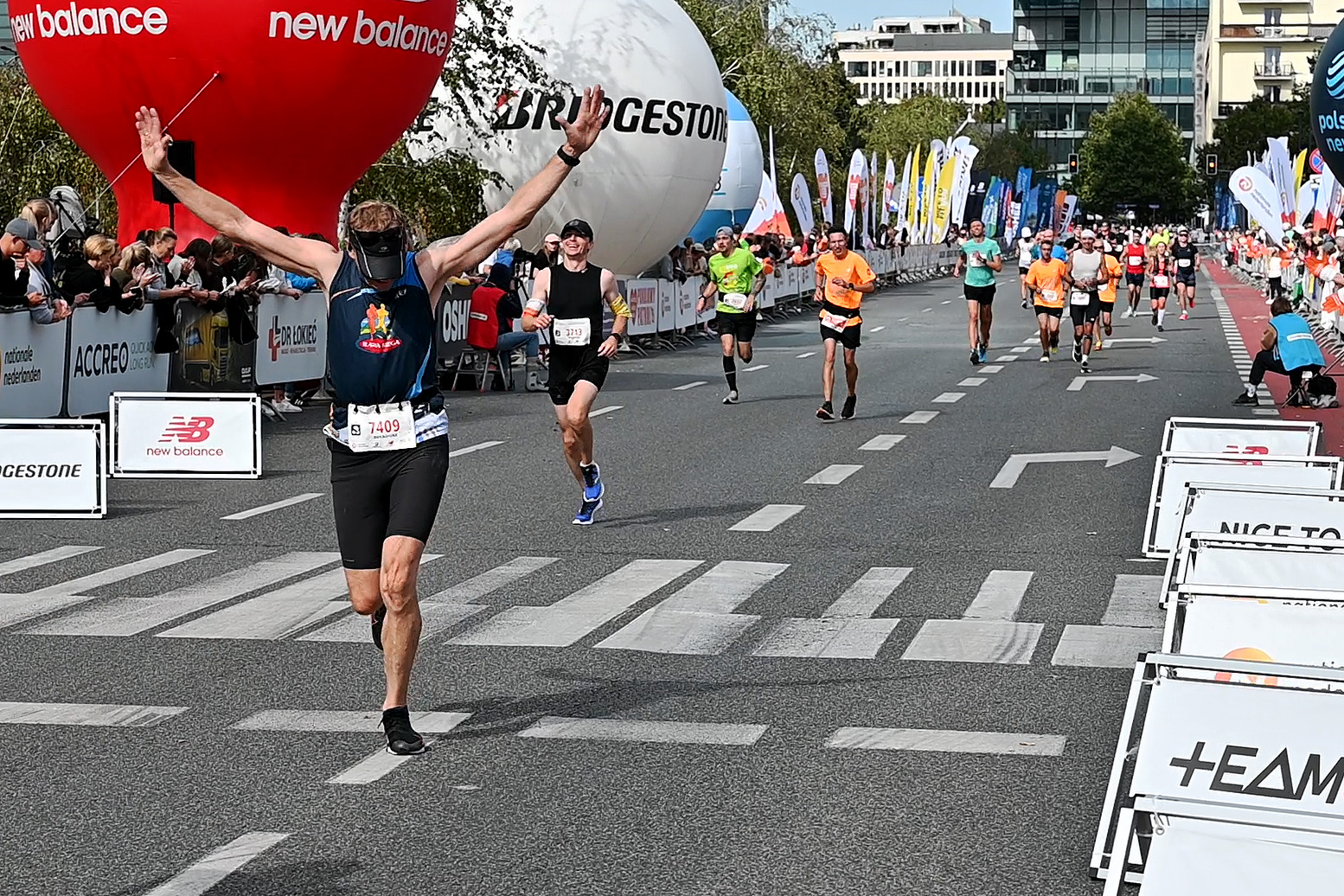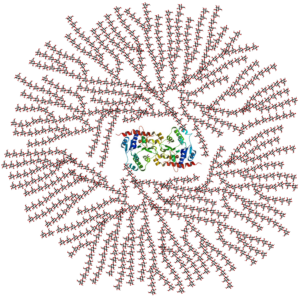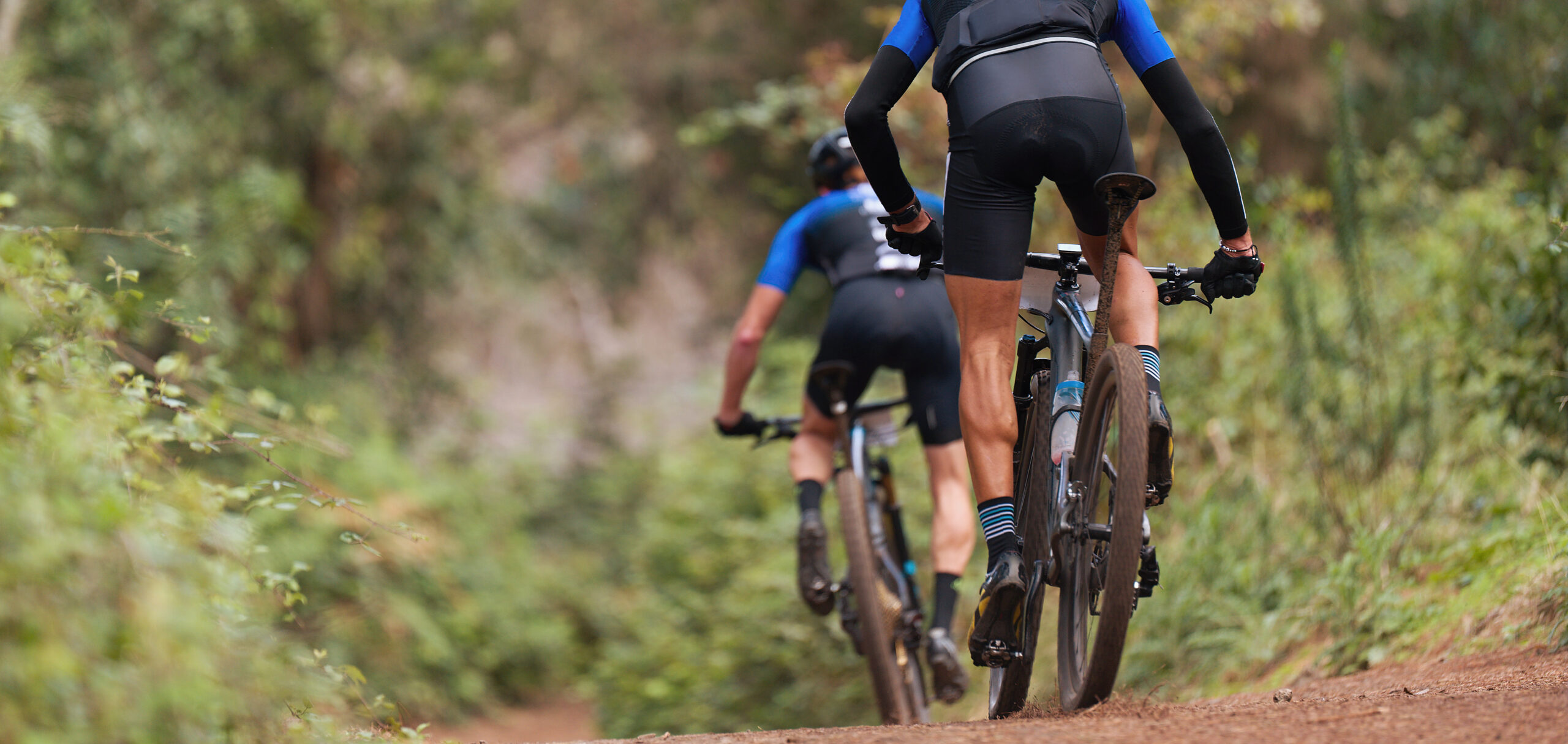Carbohydrate loading, or how to outsmart fatigue?

Endurance sports, such as marathon, cycling, triathlon, cross-country running, long distance swimming, kayaking, rowing or cross-country skiing are highly popular. These activities require selection of an adequate type of training and complex preparation. One of its pillars is development of an individualised nutrition strategy, which not only enables the body to handle intense training, but also ensures optimal regeneration, prevents gastrointestinal problems or helps maintain well-being. Adequately selected nutrition, especially in the period around the event, will also have a great impact on performance.
Authors: Klaudia Buczek, MSc Eng., and Michał Miśta, MSc Pharm.
Contents
- Wall
- Energy for working muscles
- Phosphocreatine
- Glycogen
- Use of glycogen in various types of muscle fibres
- Two phases of glycogen resythesis
- Glycogen hypercompensation
- Carbohydrate loading – what it is?
- Classsic model of carbohydrate loading
- Contemporary model of carbohydrate loading
- Carbohydrate loading – when and for whom?
- Carbohydrate loading in non-endurance disciplines
- Carbohydrate loading and sex
- Carbohydrate loading – use in practice
- Carbohydrate loading in advance
- Do not test anything during competition!
Wall
Watching reports of athletes approaching the finish of a marathon we often see moving scenes, when staggering athletes unexpectedly fall down. With no strength to continue the race, they cover the last meters on all fours, and cross the finish line with the utmost effort. This phenomenon, manifested as extreme fatigue and sudden energy cut-off, accompanied by slowing the pace during exercise, is defined as “hitting the wall”, “bonking” or “blowing up”. The term originates from cycling, but it equally refers to other endurance sports. The causes of “hitting the wall” are complex, but one of the most important causes is undoubtedly depletion of body energy reserves.
Energy for working muscles
Adenosine triphosphate, known as ATP, is a direct substrate supplying energy to the working muscles, and playing a role of a universal energy carrier. ATP reserve accumulated in the muscle cell is very small and allows for only a few contractions. In spite of this, even during intense exercise, its resources are depleted only by 20% to 30% of the initial content. The body does not allow depletion of ATP resources, since that would cause permanent connection of actin and myosin threads, i.e. protein filaments, whose physical interaction enables the function of a muscle cell (myocyte). This condition occurs after life processes are stopped, with resulting rigor mortis.
However, let us return to ATP. As already mentioned, its resource in the cell is very limited; therefore, it must be constantly regenerated. This process happens constantly with surprising efficacy: a working muscle cell recovers its all ATP pool in less than a minute, and the total amount of ATP undergoing recirculation in 24 hours is approximately equal to the body weight! This effective ATP regeneration certainly requires significant amounts of energy. In cell muscles, this energy is derived in the first place from another high-energy compound, called phosphocreatine.
Phosphocreatine
The phosphocreatine supply in the muscle cells enables maintenance of high rate of ATP regeneration within several seconds of the start of exercise. Although this is a key energy source for athletes practising disciplines where the energy demand is immediate and short-term, e.g. weight-lifters, in the case of runners, the phosphocreatine pool stored in the muscles is sufficient for a 100 metre sprint. In order to continue exercise, the body would have to reach for other energy substrates, which may come from intramuscular sources (endogenous substrates -glycogen and triacylglycerols) and from blood (exogenous substrates, such as glucose, free fatty acids, plasma lipoproteins, ketone bodies or some amino acids). The degree of consumption of particular energy substrates depends on the type of muscle fibres, and on the intensity and duration of exercise. The awareness of their diversity, and the ability of their optimal regeneration is crucial for the selection of an optimal nutrition strategy. This will also affect the effectiveness of the exercise. In the case of endurance sport disciplines, one endogenous substrate is of special importance, i.e.…
Glycogen
Glucose is a basic and very productive source of energy for body cells. Suffice it to say that complete oxidation of one glucose molecule results in the formation of about 30 ATP molecules. For a certain type of cells, such as red blood cells (erythrocytes), glucose is the only available source of energy. Brain and nerve cells are especially sensitive to glucose absence. In the light of the above-mentioned information, it seems surprising that the total amount of circulating glucose of a person with a body weight of 70 kilograms is only 4 grams. This amount corresponds to a flat teaspoon, and its caloric content is only 16 kilocalories.
Glucose cannot be stored in an unchanged form, since its high concentration would disturb the osmotic balance of the cells, causing their damage. For this reason, human body has developed a complex system based on e.g. antagonistic activity of two hormones – insulin and glucagon, which maintains a relatively constant, standard blood glucose level of 4.0 – 5.5 mmol/l, which corresponds to 70 – 100 mg/ 100 ml (dl), and is defined as euglycaemia in scientific literature. Glucose reserves are stored in the form of osmotically inactive and easy-to-use polymer – a polysaccharide called glycogen. Glycogen is a large molecule, whose core contains protein (glycogenin) surrounded by a high number of branched chains composed of glucose residues (monomers). Their ends form a complex surface of a glycogen particle, which, if necessary, may be quickly degraded, leading to effective release of required amounts of glucose. A two-dimensional model of a glycogen molecule is presented in the picture below.

A vast majority of glycogen is located in muscle cells – approx. 500 g on average (1% – 2% of the myocyte volume) and hepatic cells – approx. 80 g on average (5% – 6% of the hepatocyte volume), where it forms numerous granules of various sizes dispersed in the cytoplasm and containing different amounts of glucose monomers. The primary role of hepatic glycogen is to maintain constant blood glucose level and to react to the glucose need of the body, as a whole. And muscle glycogen is used only as a local glucose reservoir, available for the needs of a given muscle fibre (constituting a single, multinucleated cell). Due to physiological conditioning, glucose originating from glycogen accumulated in a given muscle fibre cannot be released to blood becoming a source of energy for other cells (or even for the neighbouring muscle fibres). This makes glycogen remain in the muscles for a longer time, and this fact may be used in practice, which will be discussed further in the text.
Muscle glycogen is mainly distributed in three specific regions (compartments) of the cell, in close proximity to the sites where energy supplies are required. It should also be added that glycogen granules are not only “containers” of condensed fuel, like glucose molecules, but have also another significance. To make it simple, they may be said to have a role of “sensors”. Among other things, glycogen causes transmission of impulse leading to a muscle twitch (release of calcium ions from the sarcoplasmic reticulum) and takes part in the regulation of metabolic pathways related to the processes of exercise adaptation. Moreover, it is a part of the system regulating the intracellular osmotic pressure. Due to this varied role of glycogen, its decreasing resources during exercise may not only disturb energy transformations, but also complex signalling and regulatory processes. From the athlete’s point of view, it is important that they impair generation of muscle strength. This is probably why, during highly intense exercise, when the amount of muscle glycogen is much depleted, the body does not decrease its contents below 10% in relation to the initial amount.
Although the amount of glycogen accumulated in the liver and muscles is only 4% of the total energy reserves of the body, it is muscle glycogen that is a basic source of energy for working muscles in the case of exercise of moderate and high intensity. This results from the involvement (recruitment) of various types of skeletal muscle fibres which have various structural, functional and metabolic characteristics, depending on the type of exercise, which is illustrated in the table below.
Use of glycogen in various types of muscle fibres
Skeletal muscles are built of three types of fibres: type I fibres, i.e. slow-twitch or oxidative, and type IIa and IIx fibres, i.e. fast-twitch, called oxidative-glycolytic and glycolytic fibres, respectively.
During low intensity exercise, even such lasting a few hours, the use of glycogen is relatively low and primarily affects well vascularised and fatigue-resistant type I fibres, which are recruited by the body first. These fibres are naturally poor in glycogen and their chief source of energy is degradation of lipids (triacylglycerols). Lipids are a high-energy form of energy storage, although the process of ATP production therefrom is slower than the production of ATP from glycogen. This fact, combined with low transmission rate of axons innervating type I fibres, translates into their low speed of contraction. That is why they are called slow-twitch fibres. The presented characteristics predispose this type of fibres to be involved in long-term exercise, such as running a marathon or maintaining an extended body position.
Increased burden involves recruitment of glycogen-rich type IIa fibres (oxidative-glycolytic), which may derive energy from both aerobic and anaerobic processes. This results in an increased consumption of glycogen, which is a basic source of energy for these fibres.
In the case of the highest burden, type IIx (glycolytic) fibres are recruited last. They are characterised by “power burst”, typical of sprints or weight-lifting. Their primary source of energy are anaerobic processes. These fibres are able to generate the highest amounts of energy, but they use much of their glycogen reserves for that purpose, rapidly showing fatigue.
It is interesting that in the case of oxidative (type I) fibres, the use of glycogen during intense exercise is reduced with an increased burden. For example, after stopping exercise of very high intensity (due to complete fatigue), there is almost complete glycogen utilisation in type IIx fibres, 70% decrease in the glycogen content in type IIa fibres, and only 25% decline in glycogen in type I fibres.
The proportions in which particular types of muscle fibres occur in a given muscle are genetically determined. Indeed, the proportion of type I fibres in the vastus lateralis muscle (constituting the strongest element of the quadriceps femoris) may range from 5% to 90%! This phenomenon partially accounts for natural predisposition of a given person to a specific type of activity. Therefore, it should not be surprising that athletes prepared in terms of endurance disciplines show a particularly high proportion of type I fibres, while groups of muscles crucial for sprinters and weight-lifers are primarily composed of type IIa and IIx fibres. There is an exception, however, the soleus muscle of the calf, which, regardless of an individual, is characterised by a high content of type I fibres, which is a great example of adaptation to the function it serves.
| Traits | Types of muscle fibres | |||
| Type I (SO, ST) oxidative |
Type IIa (FOG, FTA) oxidative-glycolytic |
Type IIx (FG, FTX) glycolytic |
||
| Structural | Diameter | Low | High | Medium |
| Vascularity | High | Medium | Low | |
| Fibre colour | Red | Reddish | White | |
| Mitochondrial density | High | Medium | Low | |
| Metabolic | Type of metabolism | Aerobic | Aerobic and anaerobic |
Anaerobic |
| Glycogen content | Low | High | High | |
| Fat (triacylglycerol) content | High | Medium | Low | |
| Myoglobin content | High | High | Low | |
| Functional | Order of recruitment | 1 | 2 | 3 |
| Speed of contraction | Low | High | High | |
| Twitch strength | Low | Average | High | |
| Resistance to fatigue | Very high | High | Low | |
Two phases of glycogen resynthesis
The recovery of glycogen resources utilised during training takes place in two phases. A rapid phase of glycogen resynthesis lasts 30-60 minutes after stopping exercise, and is related e.g. to transfer of glucose transporter type 4 proteins (GLU4) on the myocyte mucosa without the participation of insulin, which fosters glucose absorption by the muscle fibre. Glycogen resynthesis is then the fastest. In the subsequent slow (insulin-dependent) phase, glycogen resynthesis is much slowed down to approx. 10 – 30% of the initial value. Available studies clearly indicate that consuming a portion of absorbable carbohydrates (with high glycaemic index) immediately post training initiates the process of rapid glycogen recovery, lasting for the first 2 hours post exercise. During this time, the so-called “garage door of opportunity” is closed. These data show that if we wish to achieve quick recovery, we must not delay carbohydrate consumption after the training. In this case, the sooner, the better! If we then have a high-carbohydrate diet, i.e. such where carbohydrates constitute at least 70% of the caloric value, a complete glycogen resynthesis occurs within 24 hours.
Glycogen hypercompensation
Continuation of a high-carbohydrate diet in the next 24 – 48 hours significantly increases the glycogen level in relation to pre-exercise content, but one must remember than any muscle injuries suffered during training may prolong this process. If the training volume is significantly reduced during this period, or, even better, complete rest is introduced, this may lead to a phenomenon called hypercompensation (or supercompensation) of glycogen. It has a very practical use in sport.

Carbohydrate loading – what it is?
Carbohydrate loading, also called glycogen loading, is a nutrition strategy to maximise the storage of glycogen in the muscles. This is a simple and well examined method, which is one of the standard elements of pre-event preparation, widely used especially in endurance sports. The optimisation of glycogen resources delays the moment of fatigue and prolongs exercise time at a constant level of intensity even by 20%.
Classic model of carbohydrate loading
The practice of carbohydrate loading dates back to late 60’s. A classic model was developed in 1967 by Swedish researchers led by Björn Ahlborg and Jonas Bergström, who conducted histopathological examinations of muscle specimens collected from a group of healthy men. The participants underwent biopsy before and after exercise leading to complete exhaustion. Then, a glycogen content in the collected material was compared. These pioneer studies revealed a positive correlation between the level of muscle glycogen and exercise capacity of athletes, and the loading regimen developed on the basis of these studies have become the most popular method to increase the muscle glycogen for a long time. Let us have a closer look at this.
A classic cycle of carbohydrate loading lasts seven days and begins with a three- or four-day glycogen depletion phase. This is reached by combining a low-carbohydrate diet with training that favours depletion of muscle glycogen. This is followed by the proper three- or four-day carbohydrate loading phase involving the use of high-carbohydrate diet. In order to support glycogen storage, the training volume is reduced in that period, or complete rest is introduced.
This method, however, has serious drawbacks. For athletes practising endurance sports, whose everyday diet is typically rich in carbohydrates, the glycogen depletion phase is particularly burdensome. It could be said that it turns the nutrition upside down. During the depletion phase, there often occur uncomfortable complaints, such as: mood swings, irritation, worse well-being, weakness with drowsiness, headache or gastrointestinal problems. This phase is also associated with an increase in the catabolic cortisol level and higher risk of injury, and the following above-average consumption of carbohydrates in the loading phase exposes the body to a great burden. This naturally raises some concerns as to its use.
Contemporary model of carbohydrate loading
A series of studies conducted a decade later on a group of professional runners by American researchers led by W.M. Sherman revealed that well-trained athletes were able to increase their storage of muscle glycogen without the necessity to use the burdensome depletion phase. The athletes could achieve the same result preceding long-term exercise with a 3-day carbohydrate loading phase, during which they delivered 8-10 g (in extreme cases even 12 g) of carbohydrates per kilogram body weight, resigning from training during that period, or using training of much lower volume. This observation was a kind of breakthrough in the nutrition strategy. Elimination of the unpleasant glycogen depletion phase made the loading method shorter and much easier to use in practice. This model is currently the most popular.
Interestingly, well-trained athletes are able to increase their glycogen storage in the muscles even in one and a half day or two days (36 – 48 hours) only by completely resigning from training in this period and using a diet with an adequate amount of carbohydrates and calories.
Carbohydrate loading – when and for whom?
The strategy of carbohydrate loading will find best use in endurance sports, characterised by a constant level of intensity and duration over 90 minutes. It is especially well explored in such disciplines as marathon or cycling. It will work very well for triathlon and water sports – long-distance swimming, kayaking or rowing. In the case of mountain sports, glycogen loading is beneficial e.g. during cross-country skiing, mountain runs and ski-tours. Potentially, it may also be useful for climbers taking part in social bouldering competition, which are characterised by a long elimination round, lasting typically about 2.5 h -3 h, during which the contestants must climb several dozen boulders. High intensity and interval nature cause high usage of muscle glycogen. What is problematic in climbing sports, however, is the importance of the athlete’s body weight. Unfortunately, due to increased amount of glycogen and water bound thereto (1 g glycogen binds 3-4 g water), the body weight increases by 2% – 3%, which may outweigh the benefits of using this nutrition strategy. Nevertheless, it is worth testing under training conditions and assess its effects on an individual basis.
Carbohydrate loading is useful for both amateur and professional athletes, but the higher training level, the larger benefits. It should also be noted that people who do not train regularly are much less capable of storing glycogen than well-trained athletes. This is best illustrated by the fact that the contents of muscle glycogen in trained athletes may reach 900 g, as compared to the above-mentioned mean contents of 500 g.
Glycogen supercompensation, like any other nutrition strategy used in sport, should be tested under training conditions, e.g. for a week weeks before an important event. It is worth consulting a sports dietician, who will help to plan the hypercompensation process with regard to individual needs of a given athlete. Employing this strategy, it is easy to make mistakes which will negate the effort put into this. Such mistake include, e.g.: selection of too fatty, thus stodgy products (French fries, chocolate, pizza), excessive spontaneous physical activity or intense training. They may lead to the utilisation or significant depletion of the accumulated glycogen reserves. Energy deficit is another factor impairing glycogen synthesis. It is a frequent cause of unsuccessful strategies of loading among women.
Carbohydrate loading in non-endurance disciplines
Disciplines that may also show benefits from glycogen hypercompensation include team and racket sports. In these sports, phases of very intense exercise are interchanged with phases of much lower intensity (interval character). Although the time of activity is typically 60 – 90 minutes, they use significant amounts of muscle glycogen. A significant increase in the muscle mass and volume resulting from a higher glycogen content increases the attractiveness of carbohydrate loading also among bodybuilders.
Benefits from using carbohydrate loading in strength sports seem to be limited, although this has not been well explored. As mentioned above, explosive exercise as the main source of energy uses ATP and phosphocreatine; nevertheless, in the case of this type of disciplines, small glycogen reserves may promote disorders in generating muscle strength. While it is worth providing a diet rich in carbohydrates ensuring an adequate glycogen level, it is not necessary to perform glycogen loading.
Carbohydrate loading and sex
Dear ladies, unfortunately, most studies on carbohydrate loading were conducted on men, since the researchers thought that the results would translate into subjects of the other sex. Unfortunately, this was not confirmed by the initial tests. This probably resulted from the fact that women applied energy restrictions which prevented effective storage of glycogen. Subsequent studies conducted with the participation of women confirmed the capacity for glycogen supercompensation provided that a normal-calorie diet was used. Moreover, there are certain observations regarding the effect of the menstrual cycle on the effectiveness of glycogen storage. It appears that supercompensation may be more effective in the luteal phase of the cycle, as compared to the follicular phase.
Carbohydrate loading – use in practice
Carbohydrate loading is performed two or three days before an important event or long-term effort. This is a strategy combining rest or significant reduction of training volume with a diet involving high carbohydrate intake. During this time, the diet should cover the total energy requirement and deliver carbohydrates in the amount of 8 – 10 grams per kilogram body weight (maximum 12). The loading time may be shortened to one and a half day or two days, taking larger amounts of carbohydrates, i.e. approximately 10 -12 grams per kilogram body weight. The shorter regimen will better suit well-trained athletes, who are accustomed to high amounts of carbohydrates in the diet. A diet with high glycaemic index is recommended, since it promotes faster carbohydrate digestion and absorption and, consequently, a more effective glycogen storage. Protein intake should be reduced to a physiological demand (about 1 gram per kilogram body weight), while fats should be reduced to minimum.
A more frequent meal consumption enables a more effective glycogen storage. Even from a practical point of view, it would be very difficult to deliver such high carbohydrate contents only in two or three meals a day. Therefore, five or six meals a day should be planned for this period. Regular consumption of smaller portions gives a lower burden to the gastrointestinal tract, which is a very important factor before the event. It must be mentioned here that high amounts of carbohydrates may cause gastrointestinal problems. Therefore, it is recommended that the diet be light, low-fat, with low fibre content and limited content of high fodmap products.
Fodmap means fermentable oligo-, di- and monosaccharides and polyols, whose digestion in the gastrointestinal tract is limited. Their presence in the small intestine facilitates water accumulation (due to osmotic effect) and favours fermentation in the large intestine. In some people, this may be manifested as bloating, gases, abdominal pain, overflowing, and even diarrhoea or constipation. Popular products high in fodmap content include e.g. garlic, onions, legumes, broccoli, cauliflower, apple, lactose-containing products (especially milk), and popular sweeteners, such as xylitol, erythritol and sorbitol. If there are no health complaints, it is not necessary to completely eliminate fodmap; restriction or careful usage would be enough.
One must also remember that it is impossible to employ the strategy of carbohydrate loading only with the use of healthy (low-processed, wholemeal) products, such as e.g. buckwheat groats, brown pasta and wholemeal rye bread, due to excessive fibre content. As far as these products are a good choice in everyday diet, they constitute excessive burden for the gastrointestinal tract during the loading strategy. Therefore, it is necessary to introduce highly-processed products with high glycaemic index, such as sugar, jam, fruit juices, dry fruits, ice creams, white bread, white pasta, white rice or potatoes. Both the solid and liquid form of carbohydrates has a similar effect on glycogen synthesis; therefore, the issue of consistency is not of much importance. Nevertheless, having regard to digestibility, liquid or half-liquid forms may turn out to be more convenient.
Apparently, the diet during carbohydrate loading is much different from standard nutrition recommendations. It should be noted, however, that this strategy is used only at certain times, exclusively by athletes, and for a very specific purpose of increasing glycogen storage and delaying the moment of fatigue during an important event. This is not a nutrition model that can be used every day.
Carbohydrate loading in advance
Interestingly enough, it is possible to perform carbohydrate loading a few days earlier than specified by a standard two- or three-day protocol and date of the event. This is recommended particularly for athletes who fear gastrointestinal complaints related to stress (preventing ingestion of so much carbohydrates) or a long journey. Glycogen granules accumulated in muscular fibres may be stored for a longer time, which we discussed in the part of the text devoted to glycogen. Then, the strategy is used in advance, so that for another one or two days before an important event a diet with standard carbohydrate content could be introduced, unloading the gastrointestinal tract. This method will be successful provided that the stored glycogen is not used, for example during training or increased spontaneous activity before the event.
Do not test anything during competition!
It should be once again emphasised how important it is to test the strategy of carbohydrate loading under training conditions. Introducing anything new in the week before the event can significantly increase the level of stress and uncertainty. On the other hand, choosing well tested methods allows for more peace of mind resulting from optimisation of the energy availability and lower risk of gastrointestinal disorders.

 EN (PLN)
EN (PLN) EN (GBP)
EN (GBP) EN (EUR)
EN (EUR)